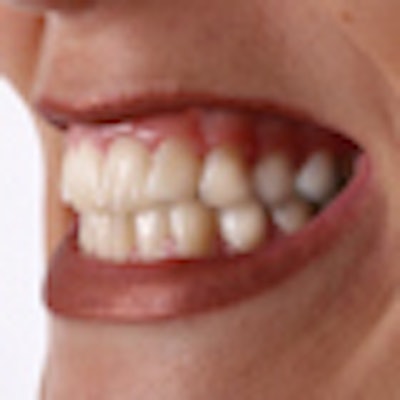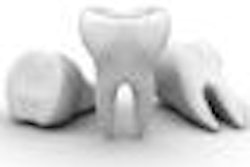
In a comparison of four composite resins, SureFil SDR (Dentsply) and Filtek LS (3M ESPE) produced the lowest residual strain on a restored tooth, according to research presented at the recent International Association for Dental Research (IADR) meeting in San Diego.
The study, conducted at the University of Alabama, Birmingham (UAB) School of Dentistry, compared SureFil SDR, Filtek LS, GC Kalore (GC America), and N'Durance (Septodont).
The researchers also found that GC Kalore and N'Durance have significantly higher residual strain than those in the first tier. Z100 (3M ESPE), the control , had significantly higher strain than all of the materials tested.
The study was funded in part by a grant from Septodont.
Shrinkage in composite restorations can result in a number of problems, noted Gowri Natarajarathinam, a resident at the UAB School of Dentistry and member of the research team. The strain resulting from it can be the impetus for failure of the composite-tooth interface, and the gaps that form can cause sensitivity, microleakage, and secondary caries in patients, she noted.
— Gowri Natarajarathinam
"We sought to measure the amount that they shrink and the stress that they create," she explained. "There aren't many studies that tell what happens to the tooth when the material does that, so that was the source of our interest."
The model for evaluating strain in newly developed composite resins -- which was created by Natarajarathinam and colleagues at UAB -- shows "significant promise" as a viable template for future composite strain studies, she said.
They initially used natural teeth, but standardization was limited by the inherent differences in the cusps and walls of each tooth. So they then decided to use composite blocks "because they are very similar to the dentin, which is what the composite restorations are going into, basically," she told DrBicuspid.com.
The 7 x 7 x 10-mm blocks had a rectangular 2 x 4 x 4-mm preparation and were mounted in acrylic in PVC tubes and stored for 24 hours in deionized water at 37° C.
"All the acrylic does is hold it for support, nothing else," Natarajarathinam noted.
The 4-mm depth was filled 2 mm at a time, since the manufacturers' instructions call for 2-mm composite for each material, she said.
"So I did 2 mm, checked to see if it's exactly 2 mm with a composite Teflon mold, light cured it for 40 seconds, put the next 2 mm, light cured it, and then let it run for 15 minutes," Natarajarathinam explained. "The strain was recorded the entire time with a unidirectional strain gauge."
The gauge was connected to a Model 5100 analog to digital scanner, and StrainSmart Software was used for stress measurements.
"What we found was the BisGMA (Z100) had the highest residual strain compared to the other low-shrinkage materials, which proves that this method is a valid method because it is supposed to," Natarajarathinam explained. "The Filtek LS and the SureFil SGR fall in the tier with the lowest residual strain; the GC Kalore and N'Durance fall in the top tier -- they don't vary significantly, but there were differences that we could observe. The Z100 was statistically significantly different from all the other groups."
Results: µstrain units (mean ± standard deviation [SD])
|
The researchers also took scanning electron microscopy images of each specimen tested.
"We sliced them and put them under the microscope to make sure each did not fail," Natarajarathinam said. "If we saw a gap, it meant the material had pulled out from the bottom of the 'tooth' and that we were just recording the strain at the time it failed, not actually recording the strain of the material."
The cost of each product is comparable, she noted, although Filtek LS has its own adhesive system, which is an additional cost.
With this preliminary research completed, clinical studies are the next step, Natarajarathinam said.



















